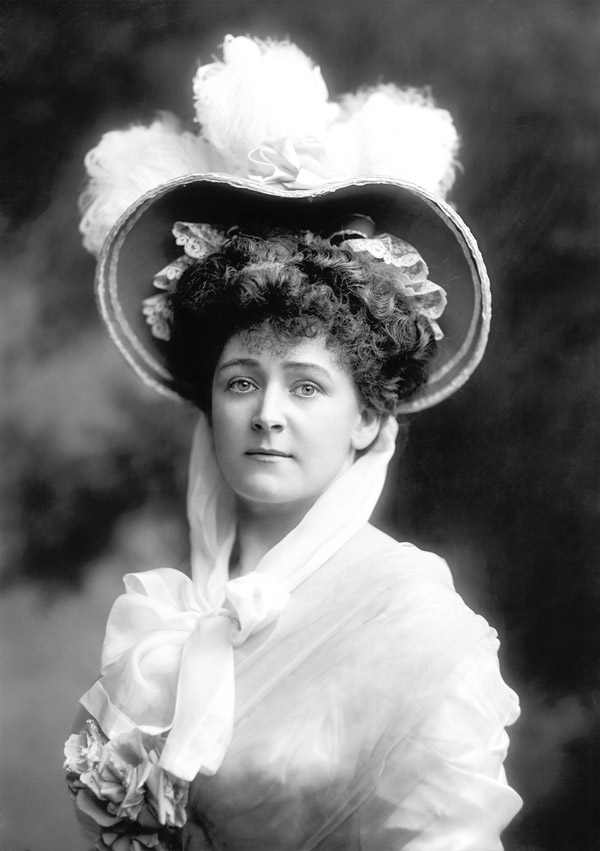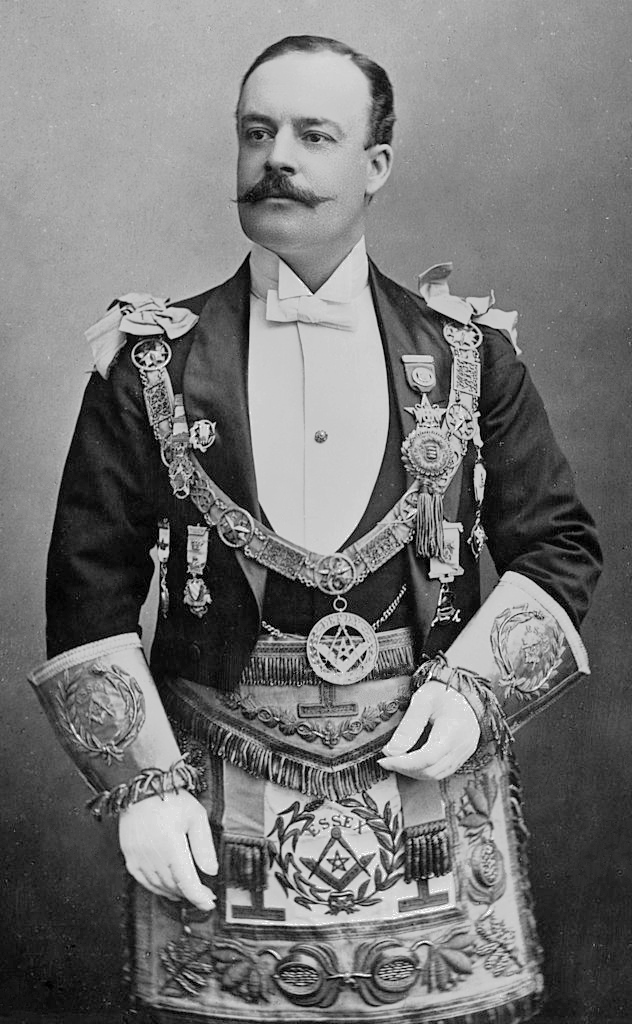by Scott Mehl © Unofficial Royalty 2020
Daisy Greville, Countess of Warwick, was the mistress of King Edward VII of the United Kingdom from 1889 until 1898, while he was The Prince of Wales. A renowned social hostess, she later put much of her time and effort – and fortune – into helping those less fortunate.

Daisy Greville, Countess of Warwick – source: Wikipedia
Frances Evelyn “Daisy” Maynard was born in London on December 10, 1861, the daughter of Col. Charles Maynard and Blanche FitzRoy. Her father was the son and heir of Henry Maynard, 3rd Viscount Maynard. Daisy’s father Charles died several months before his father, resulting in the VIscountcy Maynard becoming extinct. As the elder child, Daisy inherited the majority of the Maynard estates and fortune. Daisy’s mother was descended from King Charles II in several different ways, through his mistresses Nell Gwyn, Barbara Palmer and Louise de Kéroualle.
Daisy had one younger sister:
- Blanche Maynard (1864) – married Col. Lord Algernon Gordon-Lennox, had issue
Two years after being widowed, Daisy’s mother married Robert St Clair-Erskine, 4th Earl of Rosslyn, a favorite of Queen Victoria. Through this marriage, Daisy had five half-siblings:
- Lady Millicent St Clair-Erskine (1867) – married Cromartie Sutherland-Leveson-Gower, 4th Duke of Sutherland, had issue
- James St Clair-Erskine, 5th Earl of Rosslyn (1869) – married (1) Violet Vyner, had issue (divorced); (2) Anna Robinson, no issue (divorced); (3) Vera Bayley, had issue
- The Hon. Alexander St Clair-Erskine (1870) – married Winifrede Baker, no issue
- Lady Sybil St Clair-Erskine (1871) – married Anthony Fane, 13th Earl of Westmorland, had issue
- Lady Angela St Clair-Erskine (1876) – married Lieutenant-Colonel James Forbes, had issue (divorced)
Having inherited her paternal grandfather’s estates and fortune in 1865, including the family seat, Easton Lodge in Essex, Daisy was greatly pursued as a potential bride. One prominent possibility was a marriage to Queen Victoria’s youngest son Prince Leopold. The Queen herself wanted to arrange a marriage, but it never came to be. Instead, Daisy fell in love with Leopold’s aide-de-camp Francis Greville.

Francis Greville, 5th Earl of Warwick. source: Wikipedia
On April 30, 1881, Daisy and Francis were married at Westminster Abbey, with several members of the Royal Family in attendance including The Prince and Princess of Wales. Daisy’s new husband was the eldest son and heir of George Greville, 4th Earl of Warwick and Lady Anne Wemyss-Charteris, daughter of the 9th Earl of Wemyss. Following their marriage, the couple lived at Easton Lodge, and after her husband succeeded as 5th Earl of Warwick in 1893, they moved to Warwick Castle.
Daisy and Francis had five children:
- Leopold Guy Greville, 6th Earl of Warwick (1882) – married Elfrida Marjorie Eden, had issue
- Marjorie Blanche Greville (1884) – married (1) Charles Duncombe, 2nd Earl of Feversham, had issue; (2) Sir William Gervase Beckett, 2nd Baronet, had issue
- The Hon. Charles Greville (1885) – died in childhood
- The Hon. Maynard Greville (1898) – married Dora Pape, had issue
- Lady Mercy Greville (1904) – married (1) Basil Dean, had issue; (2) Patrick Gamble, no issue; (3) Richard Marter, no issue
It is believed that only the couple’s first child was the legitimate child of Daisy’s husband. She alleged Lord Charles Beresford was the father of her elder daughter Marjorie and it is possible that her son Charles was also Beresford’s child. Her last two children were fathered by Joe Laycock, a wealthy bachelor with whom Daisy maintained a long-term affair despite his wandering ways.

The Prince of Wales, the future King Edward VII; Credit – Wikipedia
Quickly rising in the ranks of London society, Daisy became one of the most celebrated hostesses amongst the Marlborough House Set – the upper echelon of society led by the Prince and Princess of Wales. When her affair with Charles Beresford became a public scandal in 1889, Daisy turned to the Prince of Wales for advice and support. This quickly turned into an affair that would last for nine years. The Prince would often visit her at Easton Lodge, where she had a rail station built closer to the house to make it easier for him to come and go more discreetly. After her husband succeeded his father as Earl of Warwick in 1893, the Prince of Wales became less discreet about his relationship with Daisy, often attending the theatre and other events together. This led to the Princess of Wales, who had formerly enjoyed Daisy’s company, to refuse to include Daisy in any further social events at Marlborough House and Sandringham.
After ending her affair with the Prince of Wales, Daisy threw herself into philanthropic work. Getting involved with the Social Democratic Federation, she fought for better working conditions, salaries, and education for women and those less fortunate. Within several years, she had depleted much of the fortune she had inherited from her grandfather, however, she refused an offer to write her memoirs and discuss her relationship with the then-King Edward VII. But after he died in 1910, her debt continued to increase and she began to consider the possibility of publishing her private letters. Her threats to publish them in the hopes of getting a financial settlement from the new King George V were unsuccessful. The King’s lawyers took the matter to court where it was decided that the Crown held the copyright to those letters and they could not be published in the United Kingdom. A subsequent threat to publish the letters in the United States was more successful. British politician Arthur Du Cros paid off a large amount of Daisy’s debt in exchange for the letters.
Having survived her husband for 24 years, The Dowager Countess of Warwick died at Easton Lodge on July 26, 1938, at the age of 76. She is buried at the Collegiate Church of Saint Mary in Warwick, England.
This article is the intellectual property of Unofficial Royalty and is NOT TO BE COPIED, EDITED, OR POSTED IN ANY FORM ON ANOTHER WEBSITE under any circumstances. It is permissible to use a link that directs to Unofficial Royalty.

